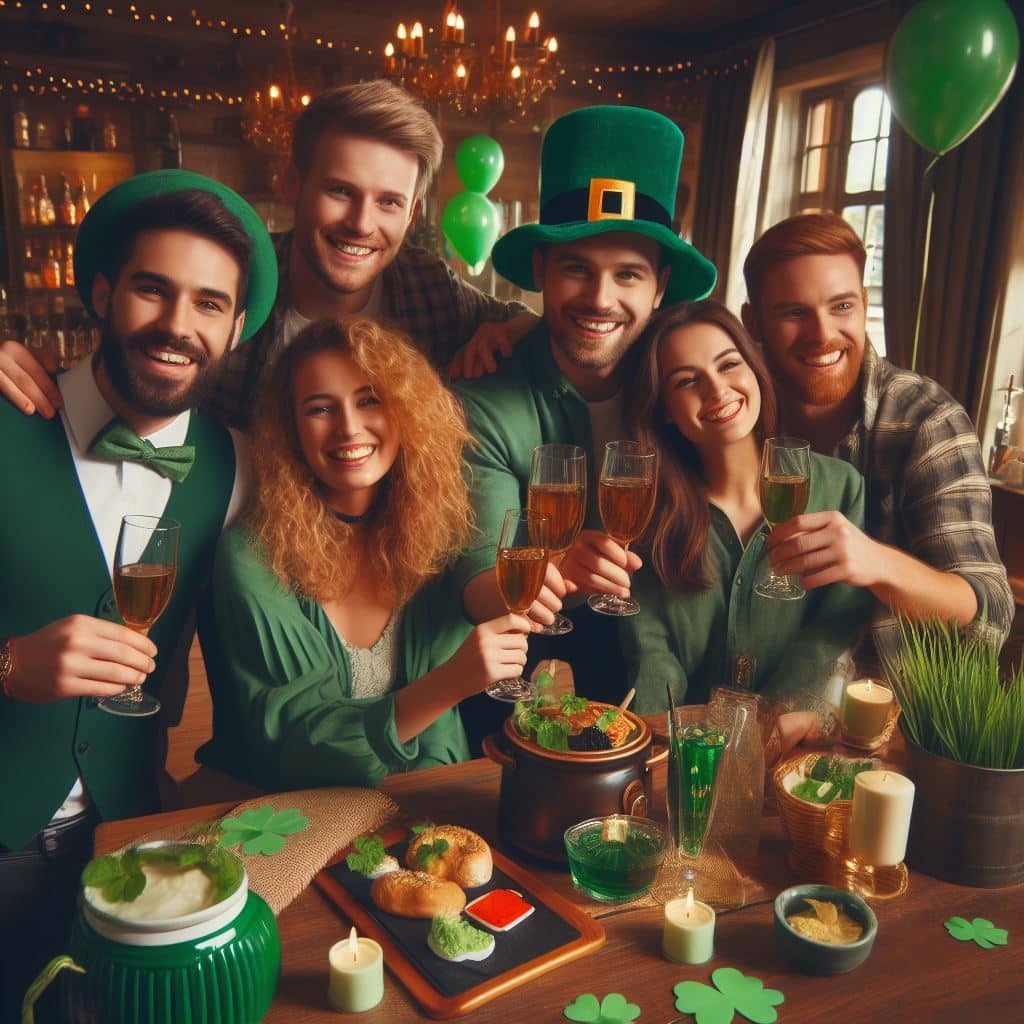
The Enigmatic Allure of St. Patrick’s Day: Celebrating Ireland’s Patron Saint
On 17th March each year, we celebrate St. Patrick’s Day, which is an Irish cultural and religious holiday that is widely celebrated around the world. It commemorates St. Patrick, the Patron Saint of Ireland, who is credited with bringing Christianity to the country, in the 5th century. But since that time, St. Patrick’s Day has evolved into a global celebration of Irish culture and heritage. Let’s tap into the significance of this day, and the global impact it has created.
Religious Roots:
St. Patrick was a missionary who played a significant role in spreading Christianity in Ireland. Legend has it that he used the three-leafed shamrock to explain the Holy Trinity (Father, Son, and Holy Spirit) to the Irish people – something we are all familiar with.
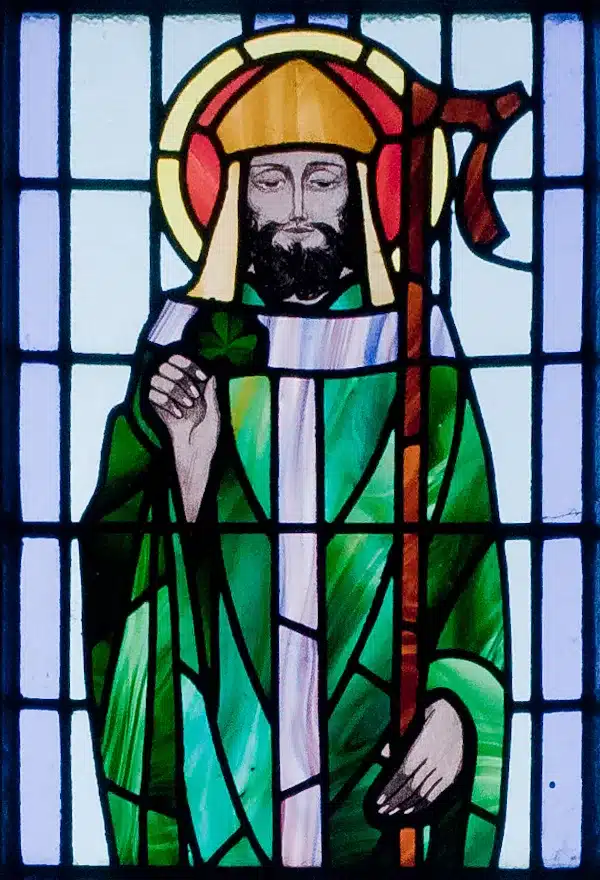
Cultural Celebration:
St. Patrick’s Day has become a celebration of Irish identity and culture, marked by parades, traditional music, set-dance or jig, and the customary wearing of the color green – which is associated with both St. Patrick and the lush countryside of Ireland.
Global Unity:
This day serves as a symbol of unity among people of Irish descent – around the world. Irish communities, and those who appreciate Irish culture come together to celebrate their shared heritage, and comradery in whichever form they are accustomed to.
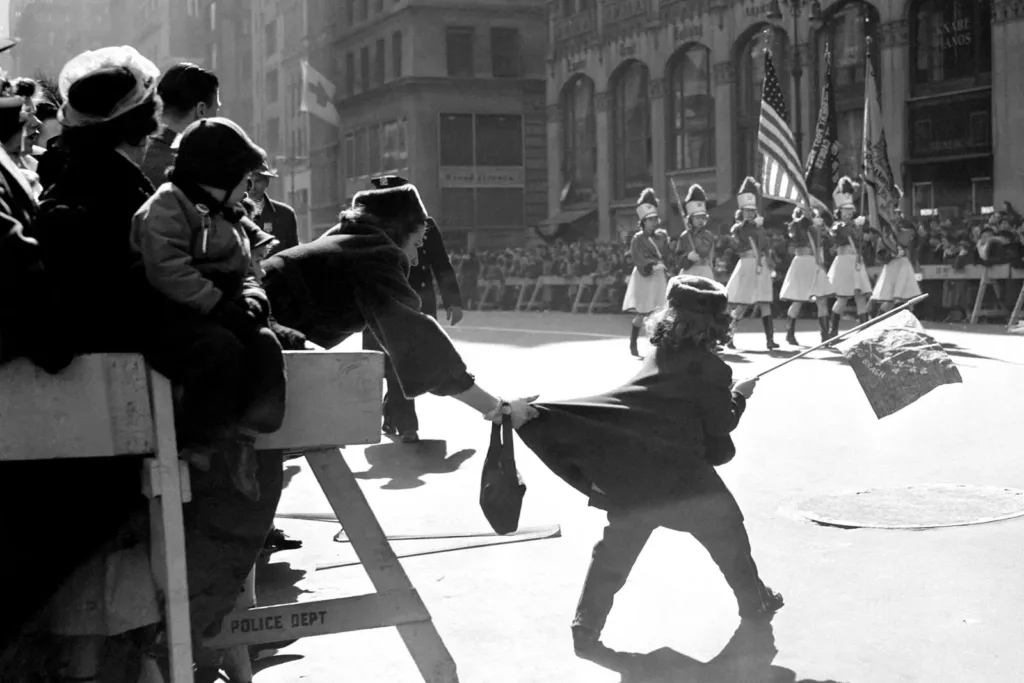
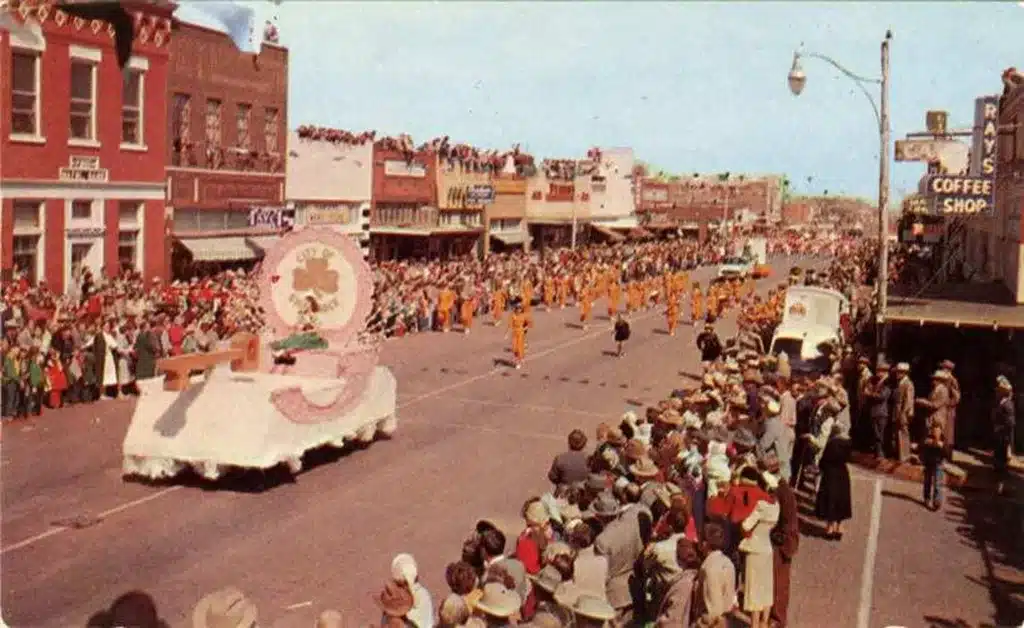
Parades and Festivals:
In Ireland, and in many cities around the world, host parades and festivals to celebrate St. Patrick’s Day. The largest and most famous parade is in Dublin, but major cities like New York, Chicago, and Boston also have massive celebrations – due to the influx of Irish Celts from the 19th century – who migrated to America creating a huge population growth.
Wearing Green:
The tradition of wearing green on St. Patrick’s Day is universal, and this custom originated from the belief that green makes people invisible to leprechauns – mischievous small creatures known in Irish folklore, and some even believe that they can reveal hidden treasures.
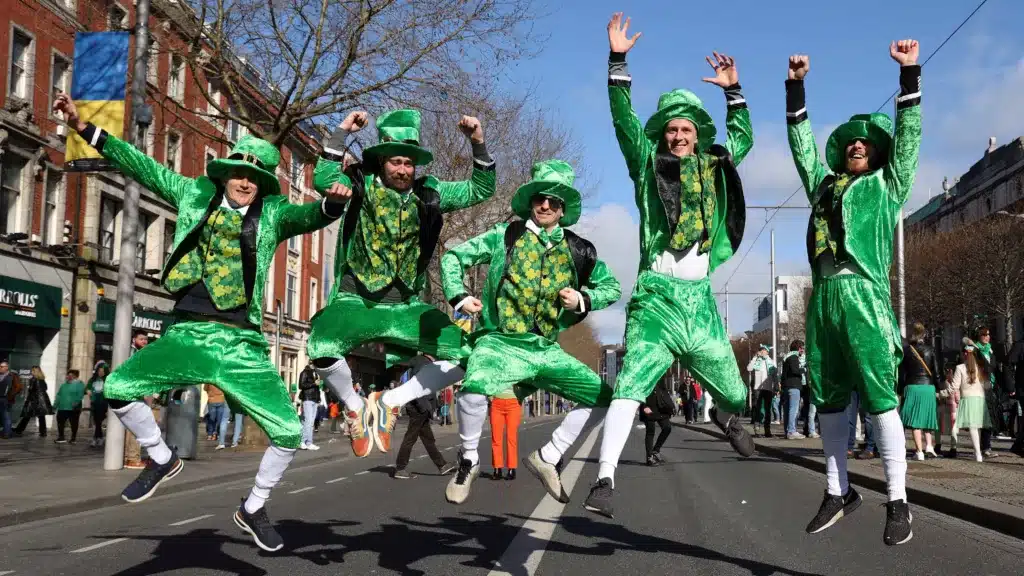
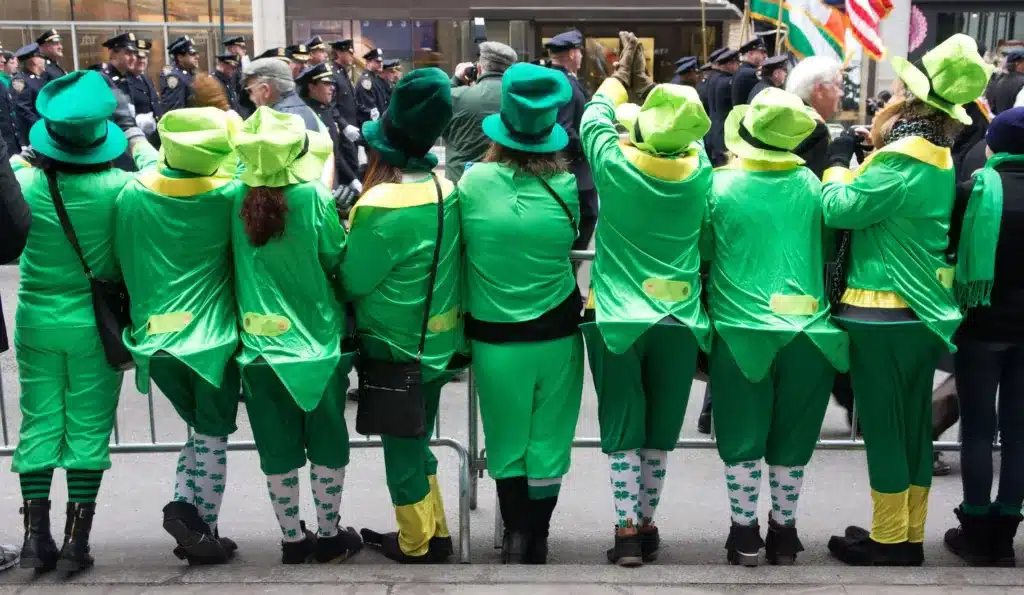
Cultural Events:
Various cultural events, including Irish music and dance performances – organised on a global scale. Traditional Irish pubs become focal points for celebrations, offering Irish food, drinks, and entertainment to many who celebrate this occasion.
Tourism Boost:
This tradition has also become a tourist boost, with St. Patrick’s Day becoming a significant economic driver, boosting tourism in Ireland, and other places with large Irish communities. Many people plan trips around this time to experience the traditional celebrations firsthand.
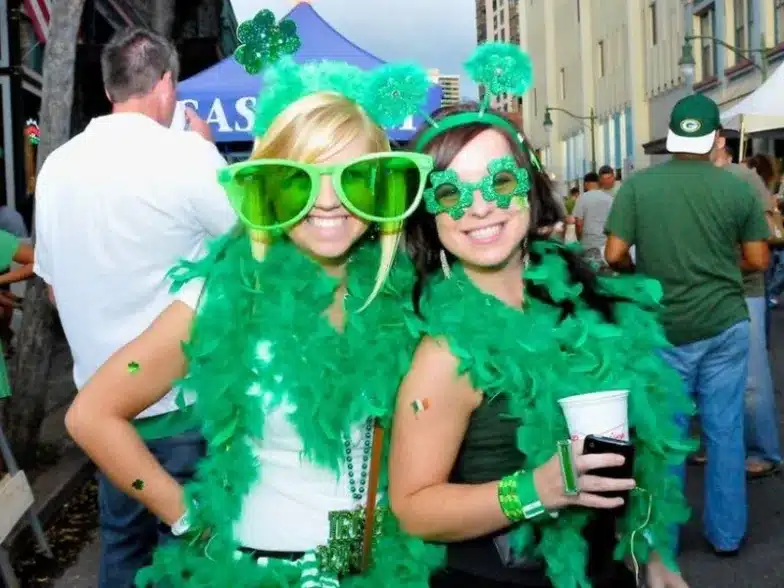
Global Recognition:
The global popularity of St. Patrick’s Day has transcended Irish borders, with people from diverse backgrounds participating in the festivities. Iconic landmarks, such as the Sydney Opera House and the Empire State Building, have been illuminated in green to mark the occasion prompting everyone to join in the celebrations.
In summary, St. Patrick’s Day is not only a religious and cultural celebration in Ireland but also a global phenomenon that brings people together to appreciate and enjoy Irish traditions. It serves as a colorful and joyous expression of Irish identity and has a positive impact on tourism, cultural exchange, and international unity.
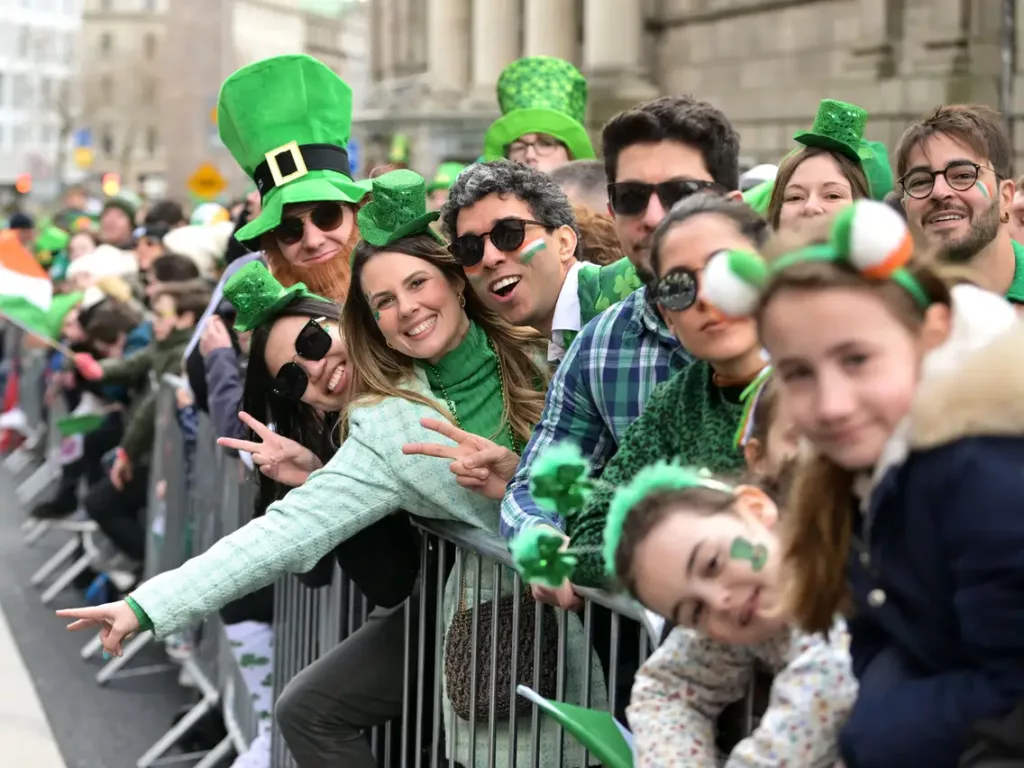
St. Patrick is widely recognized as the patron saint of Ireland, and his feast day is celebrated on March 17th. He was originally named Maewyn Succat, born in Britain, not Ireland, around the late 4th century. At the age of 16, he was captured by Irish raiders and taken to Ireland as a slave. After six years of captivity, Patrick claimed to have escaped and returned to Britain.
During this time, he had a religious conversion – and became deeply committed to Christianity. Later he went to France for religious training, and eventually became a bishop. However, when he returned to Ireland, St. Patrick played a significant role in spreading Christianity throughout the country, and converting its pagan inhabitants to Christians. St. Patrick is believed to have died on March 17th, around 461 AD, which is the date we know as St. Patrick’s Day. We celebrate his life as the Patron Saint of Ireland.
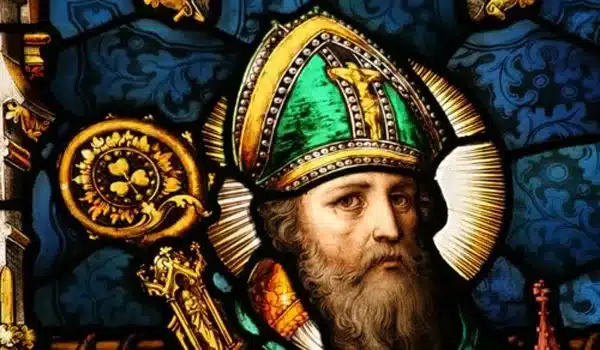
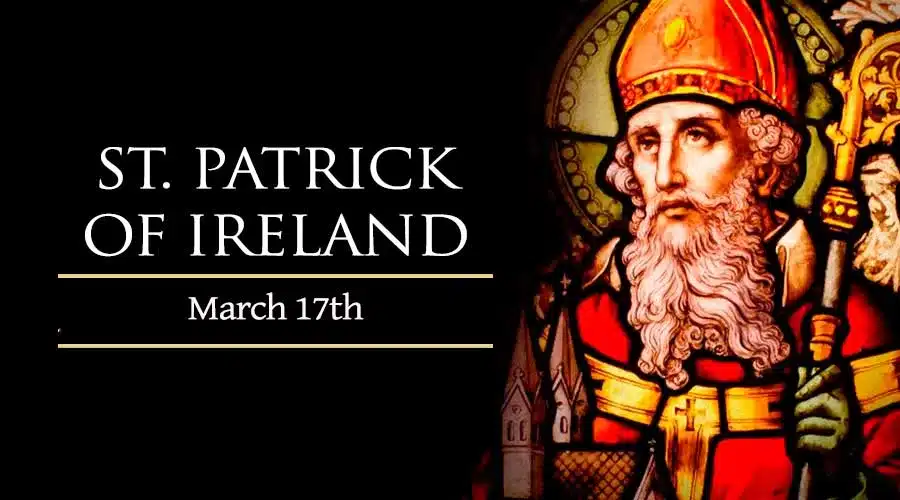
Contemporary Celebrations – Blending Traditional and Modern Festivities
St. Patrick’s Day, while rooted in Irish traditions and religious observances, celebrations have evolved over time to incorporate modern elements, making it a vibrant and inclusive occasion for all to enjoy these aspects.
Traditional Parades and Modern Themes:
St. Patrick’s Day parades are a long-standing tradition, featuring Irish dancers, bagpipers, and floats. In contemporary celebrations, these parades now include modern elements – such as themed floats, interactive displays, and performances that blend traditional Irish arts with modern entertainment.
Cultural Performances:
Traditional Irish music and dance remain central to St. Patrick’s Day festivities. However, contemporary celebrations often integrate modern interpretations of these art forms, featuring fusion performances that combine traditional Irish tunes with contemporary music genres.
Greening of Landmarks:
The iconic practice of “greening” landmarks, where famous buildings and monuments are illuminated in green lights, is a modern addition to St. Patrick’s Day celebrations. It symbolizes the global reach of the celebration, and is often shared widely on social media platforms.
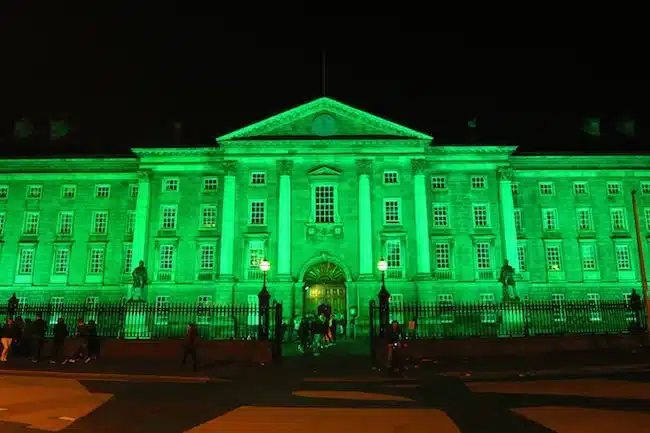
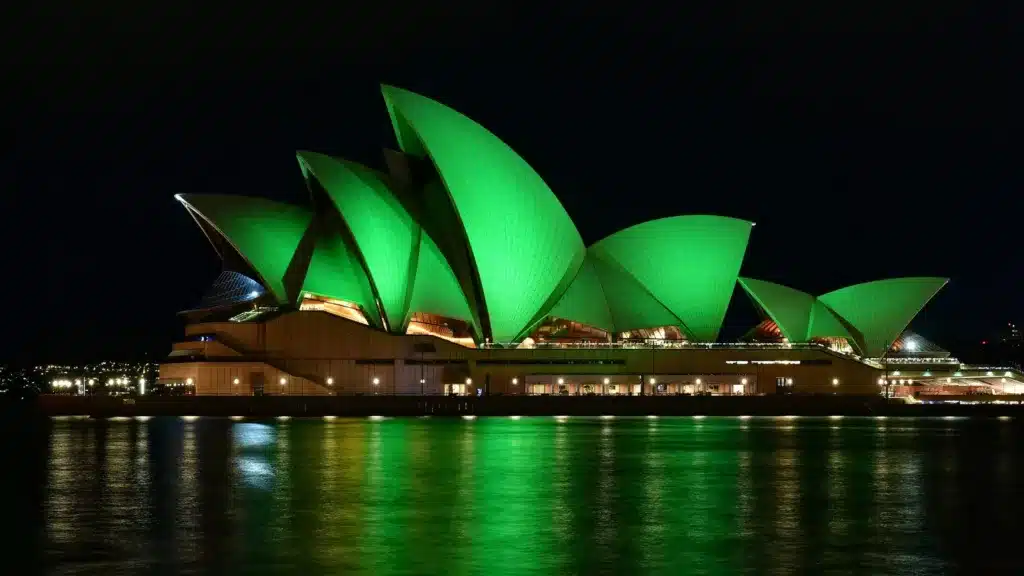
Innovative Cuisine:
Traditional Irish dishes are enjoyed during St. Patrick’s Day celebrations, but modern culinary trends and fusing cuisines may also be incorporated. For example, traditional Irish stews might be re-imagined with modern cooking techniques or presented in innovative ways to satisfy different tastes and culinary aficionados.
Technology and Virtual Celebrations:
St. Patrick’s Day celebrations have embraced technology, allowing people worldwide to participate in the festivities. Virtual events, online concerts, and social media campaigns enabling individuals to engage in the celebration regardless of their location. Some people host St.Patrick’s Day parties at home with friends instead of going out.
Craft Beer and Irish Whiskey:
While traditional Irish beverages such as Guinness being the classic choice for St. Paddy’s Day pint, craft beer and whiskey movements have added a modern twist. Festivities may include tastings, pub crawls, and events featuring local and artisanal brews.
Interactive Social Media Campaigns:
St. Patrick’s Day celebrations leverage social media platforms, with interactive campaigns, hashtags, and challenges. This modern approach encourages people to share their own celebrations, creating a sense of global community and inclusivity among all.
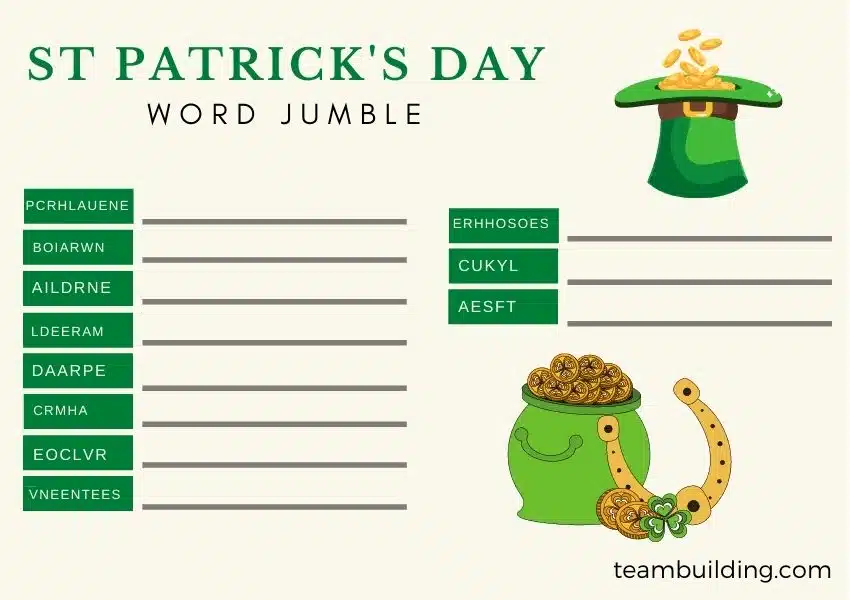
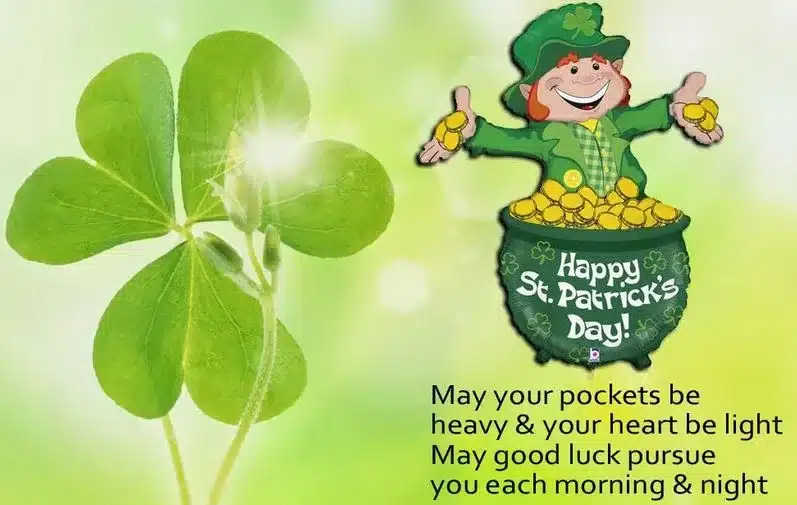
Family-Friendly Activities:
Traditional family-friendly activities like storytelling and folklore are complemented by modern forms of entertainment – such as Interactive games, virtual treasure hunts, and educational activities for children – contribute to an overall celebration.
Environmental Considerations:
Modern St. Patrick’s Day celebrations, may incorporate sustainable practices, such as eco-friendly decorations, and events that promote environmental awareness. This reflects a broader societal shift towards more responsible and conscious commemoration.
Inclusive Events:
St. Patrick’s Day celebrations have embraced a diverse range of cultural influences while encouraging participation from people of all backgrounds. Events may feature performances from various cultural traditions, fostering unity and understanding that resonates with people around the world.
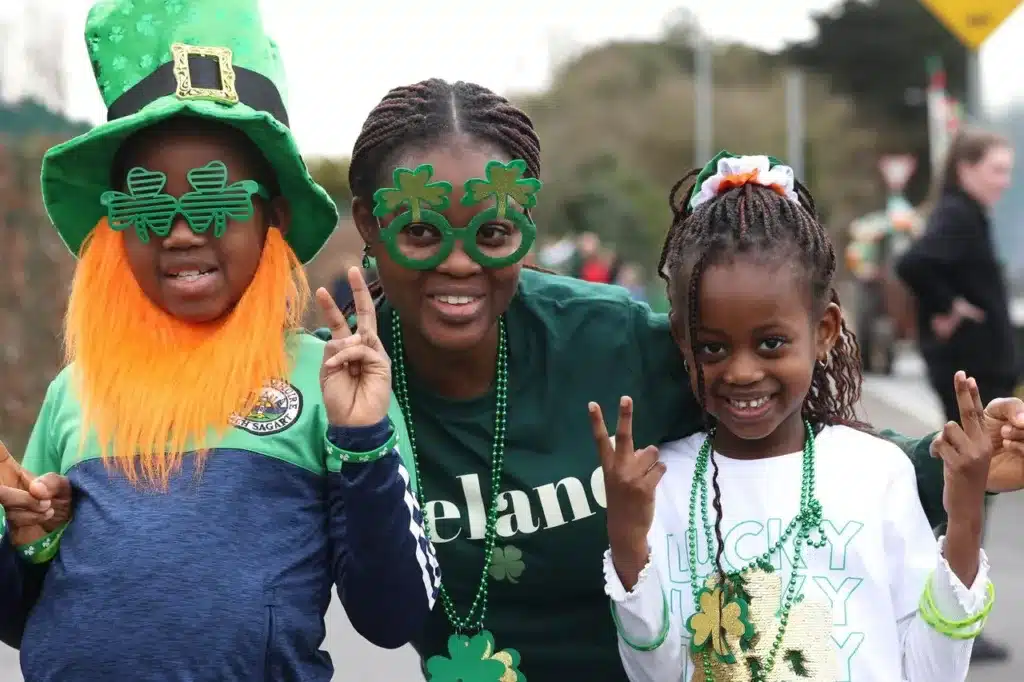
Social and Economic Aspects – Parades, Tourism and the ‘Green” Business Boom
Parades, tourism, and the ‘green’ business boom are interconnected elements that can have significant social and economic impacts, attibutable to St. Patrick’s Day celebrations.
Parades:
Social Aspect: Parades often serve as a platform for cultural expression, community engagement, and celebration. They bring people together, fostering a sense of unity and pride within a community. Parades can contribute to social cohesion by providing a shared experience and promoting a sense of identity.
Economic Aspect: Parades can stimulate the local economy by attracting visitors who spend money on accommodation, food, and souvenirs. Local businesses, such as restaurants and shops, experience increased sales during parade events. Additionally, the parade industry itself -generates economic activity through event planning, logistics, and related services, employing hundreds of workers for that special occasion.

Tourism:
Social Aspect: Tourism can promote cultural exchange and understanding as people from different backgrounds interact. It exposes communities to diverse perspectives, and can lead to the appreciation of different lifestyles and traditions. Locals may also benefit from interacting with tourists, fostering global awareness of these traditions within society.
Economic Aspect: Tourism is a major economic driver for many regions. It creates jobs in the hospitality, transportation, and service industries. Additionally, the money spent by tourists contributes to the local economy, supporting businesses and infrastructure development. A well-managed tourism sector – can lead to sustainable economic growth, when correctly planned and orchestrated.
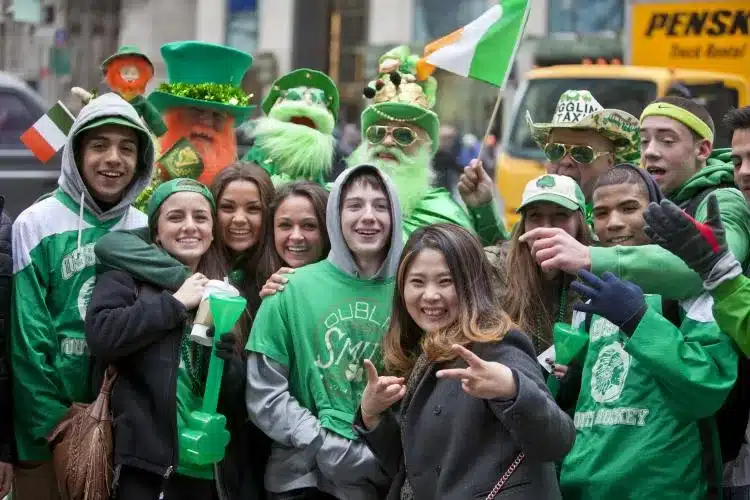
‘Green’ Business Boom:
Social Aspect: The growth of ‘green’ or environmentally friendly businesses, can contribute to a more sustainable and ecologically conscious society. As consumers become more aware of environmental issues, they may choose to support businesses that prioritize sustainability. This shift in consumer behavior can influence social norms and expectations regarding environmental responsibility.
Economic Aspect: The green business boom has the potential to create jobs in renewable energy, eco-friendly product manufacturing, and sustainable agriculture. Investments in green technologies and practices can lead to innovation and economic growth. Governments and businesses recognizing the importance of sustainability may also adopt policies and practices that benefit both the environment and the economy.
The integration of these aspects can create a positive feedback loop. For example, a town hosting environmentally themed parades may attract eco-conscious tourists, stimulating local ‘green’ businesses and fostering a sense of environmental responsibility within the community.
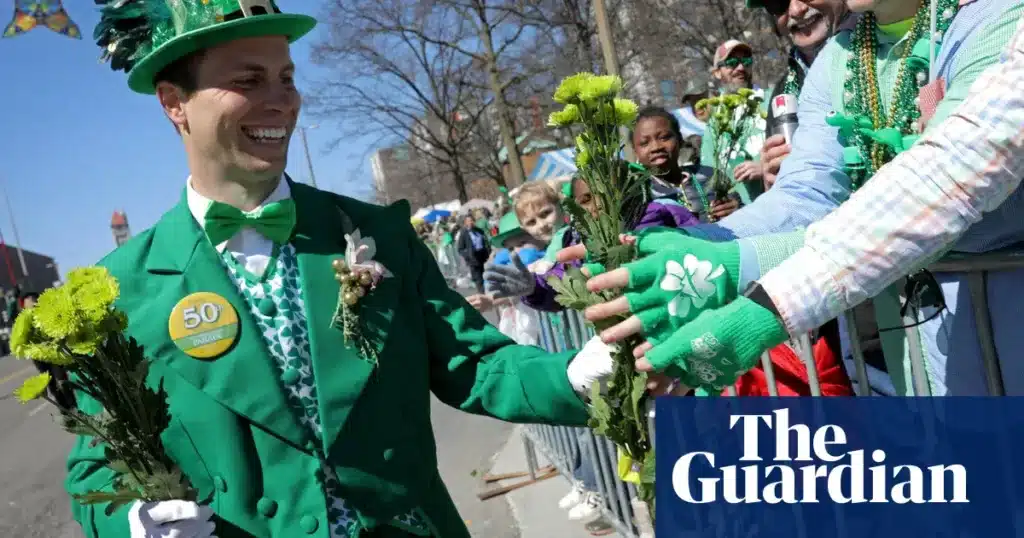
The Universal Appeal of St. Patrick’s Day – Why Everyone Wants to be Irish on March 17
St. Patrick’s Day has become a globally recognized and widely celebrated occasion. The universal appeal of St. Patrick’s Day can be attributed to several factors mentioned below.
Cultural Influence:
Irish culture has a rich history and a global influence. Many people around the world have Irish ancestry, and St. Patrick’s Day serves as a way to connect with and celebrate their heritage. Irish music, dance, literature, and folklore have gained international popularity, contributing to the widespread appeal of St. Patrick’s Day.
Symbolism:
The holiday is associated with a range of symbols, including the shamrock, leprechauns, and the color green. These symbols are easily recognizable and have become synonymous with St. Patrick’s Day celebrations. The festive atmosphere created by these symbols adds to the appeal, making the celebration enjoyable for people of all backgrounds.
Global Celebrations:
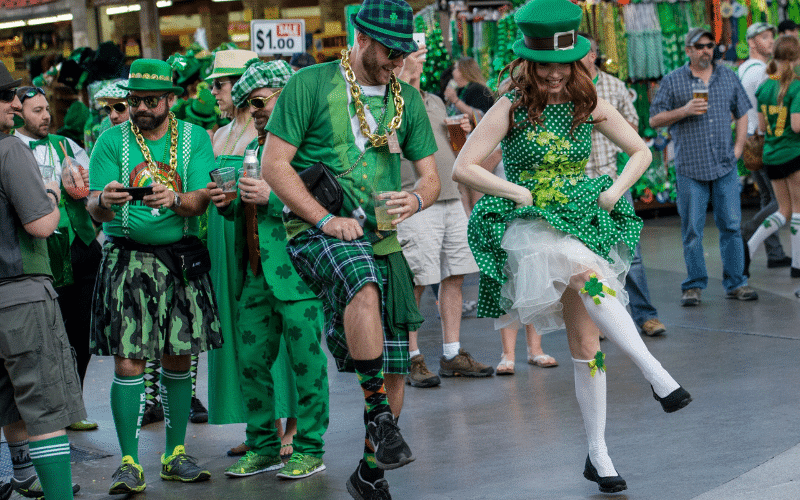
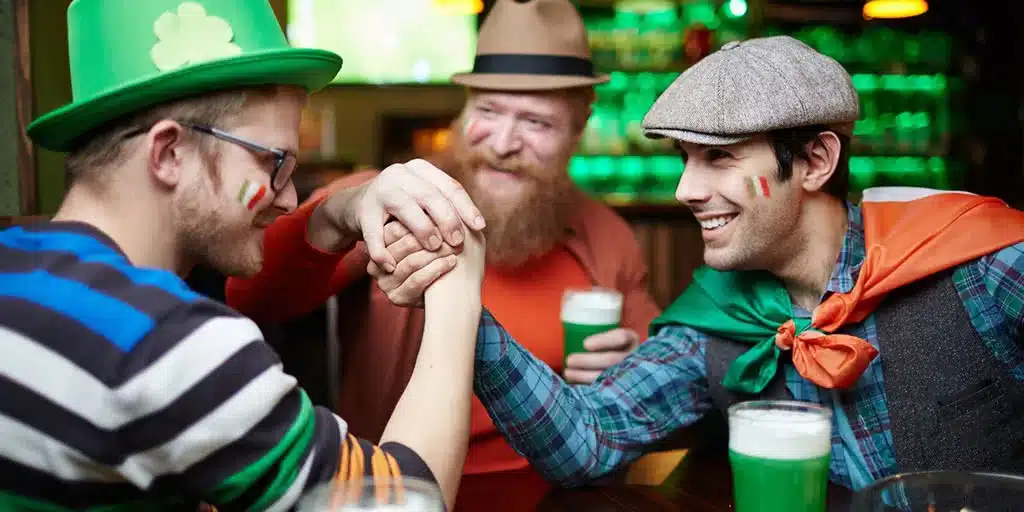
St. Patrick’s Day is not limited to Ireland; it is celebrated around the world with parades, festivals, and cultural events. Major cities across the globe join in the festivities, however few countries actually count it as a national holiday.
Sense of Community:
The celebration of St. Patrick’s Day often promotes a sense of community and togetherness. People come together to enjoy the festivities, share Irish traditions and stories passed down by generations, and embrace the joyous atmosphere.
Social and Commercial Aspect:
Patrick’s Day has also become a commercialized and social event. Many businesses and brands create special promotions, events, and products tied to the holiday, contributing to its widespread popularity.
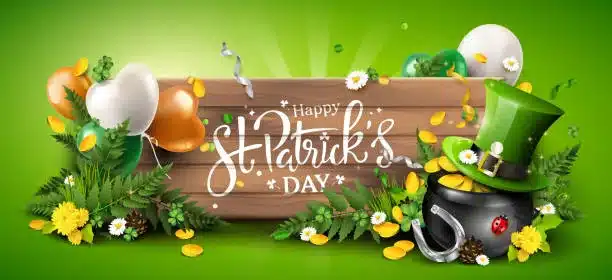
Lightheartedness and Fun:
St. Patrick’s Day is known for its lighthearted and fun atmosphere. People often wear green attire, participate in themed events, and engage in enjoyable activities, creating a sense of joy that transcends cultural boundaries.
Globalization and Media Influence:
In today’s online world, media plays a significant role in spreading cultural events. St. Patrick’s Day is covered widely in the media, further promoting its global recognition and appeal.
Open Invitation to Celebrate:
Unlike some cultural celebrations that may be exclusive as part of their rules or traditions, St. Patrick’s Day is often seen as an open invitation for people of all backgrounds to join in the festivities. This inclusive approach contributes to its universal appeal.
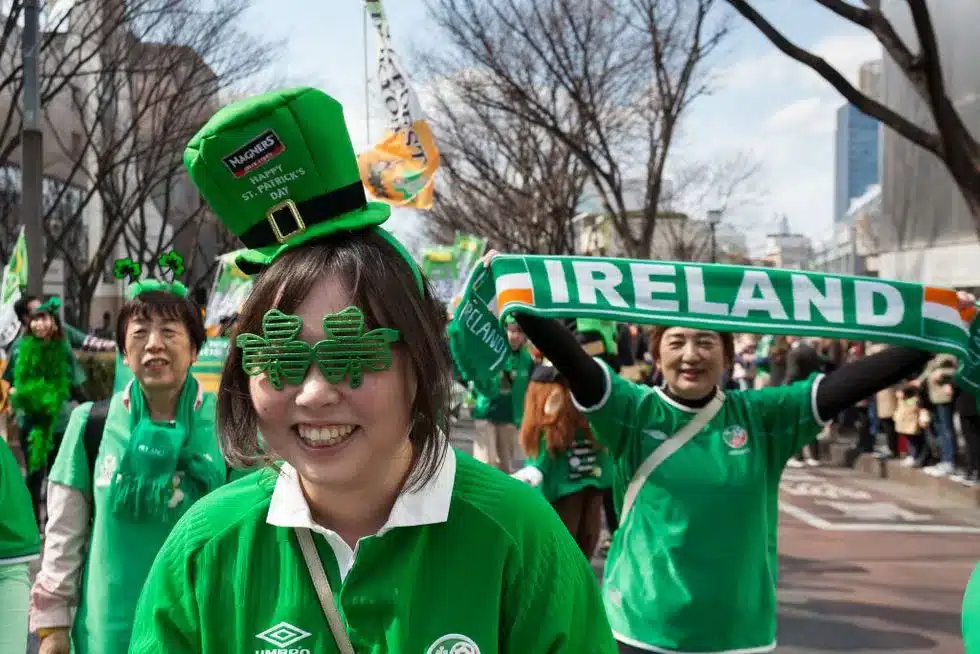
Embracing Green: The Significance of Celtic Outfit Traditions on St. Patrick’s Day
The Roots of Celtic Clothing – A Historical Perspective
Celtic clothing, like many aspects of Celtic culture, has a rich and diverse history spanning thousands of years. The Celts were an ancient Indo-European people who originated in Central Europe and eventually spread across much of Western Europe, including modern-day Ireland, Scotland, Wales, England, France, Spain, and parts of Germany and Italy. Their clothing evolved over time, influenced by factors such as climate, social status, trade, and contact with other cultures.
Early Celtic Clothing (Bronze Age – Iron Age): The early Celts, particularly during the Bronze Age and Iron Age, wore garments made from natural materials such as wool, linen, and leather. These garments were typically simple and practical, consisting of tunics, cloaks, trousers, and belts. They often used dyes made from plants, such as woad and madder, to add color to their clothing.
La Tène Period: During the La Tène period (circa 450 BCE – 1st century CE), which marked the height of Celtic art and culture, clothing styles became more elaborate and decorative. The Celts were skilled in metalworking, and they adorned their clothing with intricate designs, such as spirals, interlace patterns, and animal motifs. They also wore jewelry, including brooches, torcs, and bracelets, which served as both decorative and functional purposes.
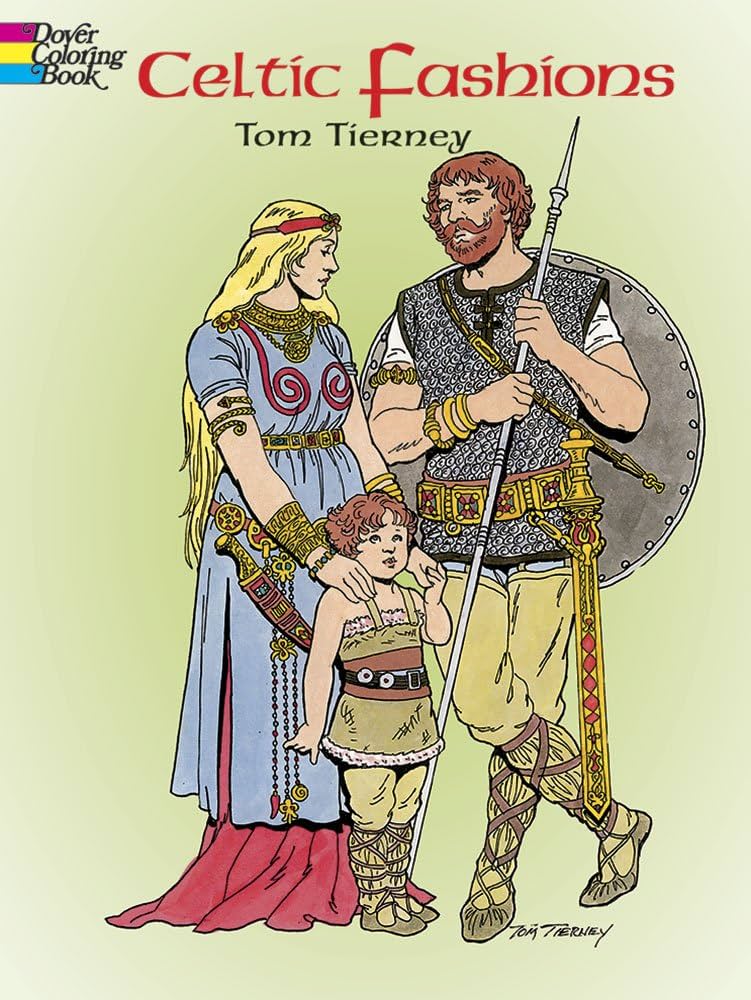
Roman Influence: The conquest of Celtic territories by the Romans in the 1st century BCE brought about significant changes in Celtic clothing. Roman influence led to the adoption of new styles and garments, such as the toga and the tunic, although Celtic clothing retained its distinctive characteristics and regional variations.
Medieval Period: During the medieval period, Celtic clothing continued to evolve, reflecting both indigenous traditions and influences from neighboring cultures, such as the Vikings and Anglo-Saxons. Garments such as the leine (a long, loose-fitting shirt) and the brat (a cloak or mantle) remained common, while new styles such as the kilt emerged in certain Celtic regions.
Modern Revival: In more recent centuries, particularly during the 19th and 20th centuries, there has been a revival of interest in Celtic culture and traditions, including clothing. This revival has led to the popularization of garments such as the kilt and the Aran sweater, as well as the incorporation of Celtic design motifs into contemporary fashion.
Today, Celtic clothing continues to be worn for ceremonial occasions, cultural events, and as a symbol of Celtic identity and heritage. While modern materials and manufacturing techniques have been adopted, traditional Celtic clothing remains a tangible link to the rich and ancient history of the Celtic peoples.
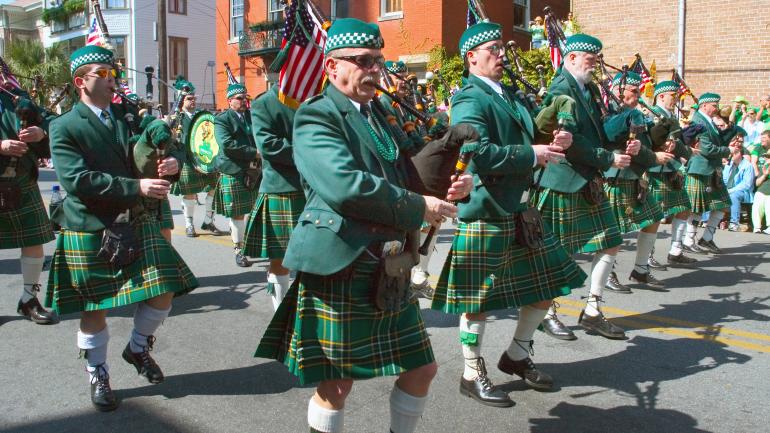
*
As an Affiliate - I may receive a commission if you purchasean item afterclicking on the links on this site*
Modern Interpretations of Celtic Outfits and their Symbolic Meanings
Modern interpretations of Celtic outfits can draw inspiration from historical Celtic clothing, adapting it to contemporary styles and preferences. While historical accuracy is not always strictly maintained, designers often incorporate Celtic symbols and motifs to honor the rich cultural heritage.
Knotwork and Interlace Patterns:
Symbolic Meaning: Celtic knot-work represents inter-connectedness and eternity. The intricate designs often found in clothing symbolize the continuity of life, with no clear beginning or end.
Spirals:
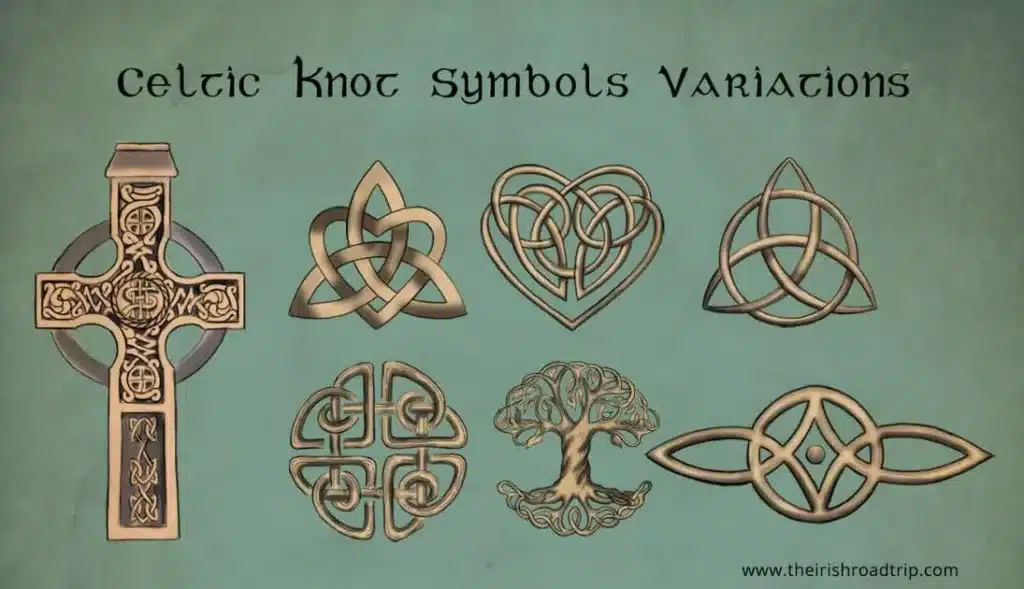
Symbolic Meaning: Spirals are common in Celtic art and can represent growth, journey, and life cycles. In modern Celtic outfits, spirals may be incorporated into embroidery or fabric patterns to create a specific style or look.
Triskele/Triskelion:
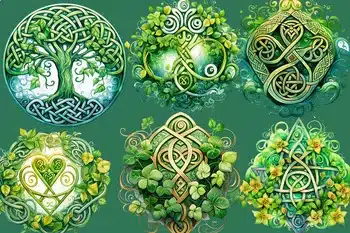
Symbolic Meaning: The triskele is a triple spiral motif, symbolizing various triads – such as life, death, and rebirth; land, sea, and sky; or past, present, and future. Modern designers may feature triskele patterns on clothing items – including bespoke pieces commissioned for a special occasion.
Celtic Animals:
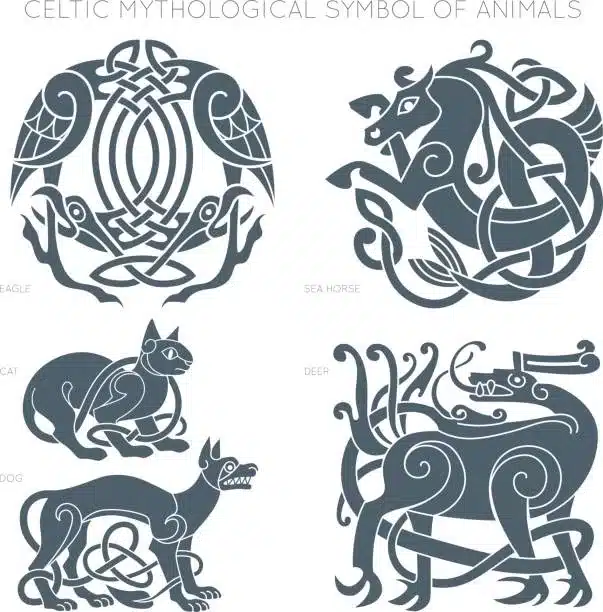
Symbolic Meaning: Animals like the Celtic dog, horse, or birds often symbolize strength, loyalty, and freedom. These motifs might be stylized and integrated into modern Celtic fashion for that custom made look.
Celtic Colors:
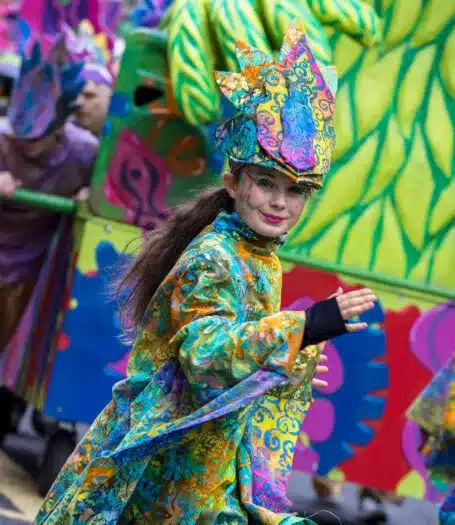
Symbolic Meaning: Traditional Celtic colors such as green, blue, and red are often associated with nature, the sea, and elements of the Celtic landscape. Modern interpretations maintain these color associations while incorporating them into contemporary clothing designs.
Cloak and Tartan Patterns:
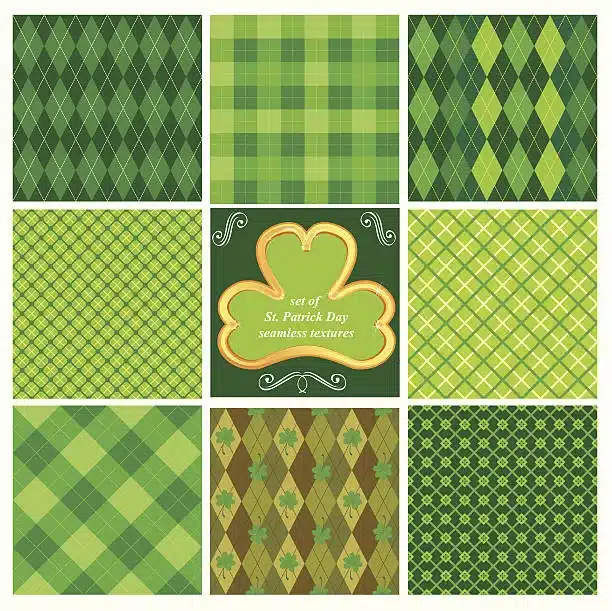
Symbolic Meaning: Cloaks and tartans, although more associated with Scottish than Irish or Welsh Celts, are sometimes included in modern Celtic-inspired fashion. Tartan patterns can represent clan affiliations or regional ties.
Brooches and Fibulae:
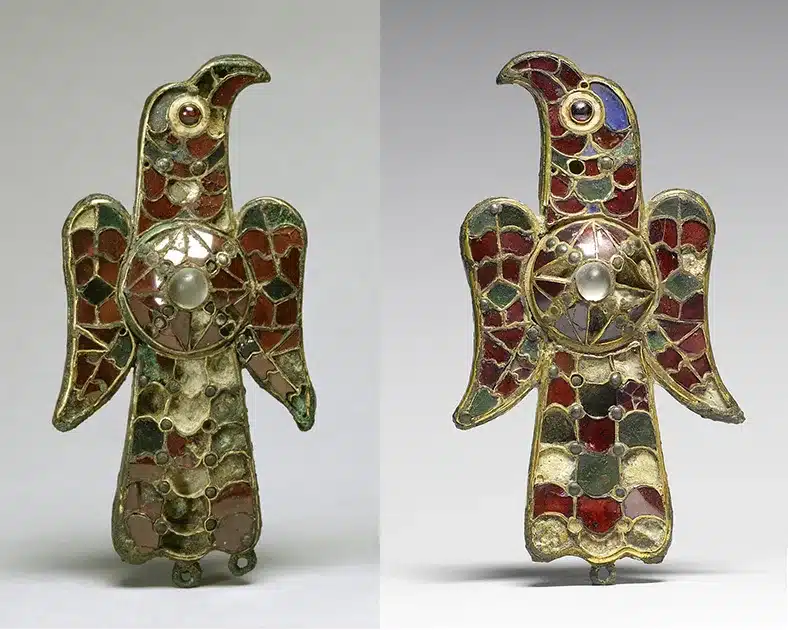
Symbolic Meaning: Brooches and fibulae were commonly used in historical Celtic clothing. In modern interpretations, these items may serve both functional and decorative purposes, often featuring Celtic knot-work or other symbolic designs.
Modern Silhouettes with Celtic Elements:
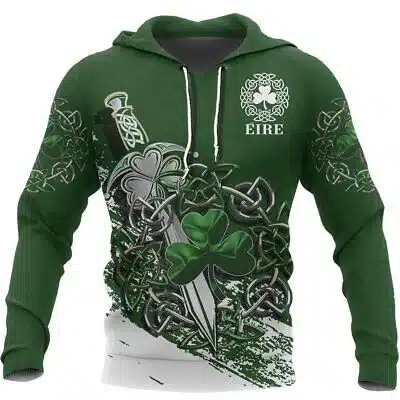
Symbolic Meaning: Contemporary fashion designers may integrate Celtic symbols into everyday clothing, such as T-shirts, dresses, or accessories. The symbolism might be subtle, allowing individuals to express their connection to Celtic heritage in more casual attire. In modern Celtic outfits, the emphasis is on capturing the essence of Celtic symbolism while adapting to current fashion trends
Fashion and identity: How attire on St. Patrick’s Day speaks to cultural pride
St. Patrick’s Day attire is a vibrant and expressive way for individuals to showcase their cultural pride and connection to Irish heritage. The clothing worn on this day often reflects a combination of traditional symbols, colors, and modern fashion trends.
Wearing Green:
Green is a dominant color associated with St. Patrick’s Day, symbolizing Ireland’s lush landscapes and, historically, the green hills of the island. Wearing green on this day is a way for people to visibly connect with Irish culture and show solidarity with the celebration.
Traditional Symbols:
Clothing may feature traditional Irish symbols such as the shamrock, a three-leaved clover that is said to have been used by St. Patrick explaining the concept of the Holy Trinity. Attire adorned with these symbols serves as a visual homage to Ireland’s rich cultural and religious history.
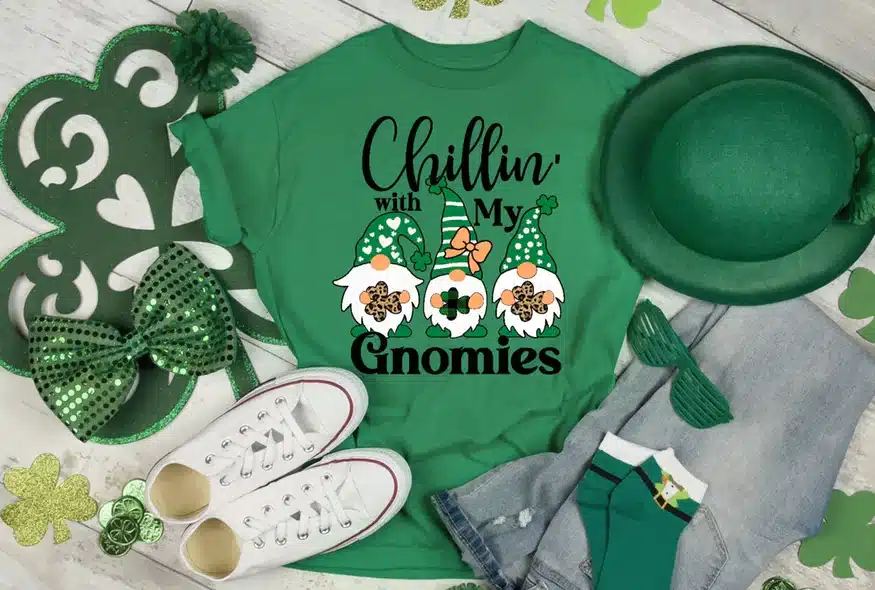
Celtic Designs:
Celtic patterns and designs, known for their intricate knot-work, are often incorporated into clothing items like scarves, ties, and even accessories. These designs have historical and cultural significance, reflecting the ancient Celtic heritage that is an integral part of Irish identity. These patterns and designs have been incorporated into fashion accessories with a cultural twist – available now.
Irish-themed Apparel:
People may choose to wear clothing featuring phrases, quotes, or images related to Irish culture, folklore, their own heritage background, or famous figures. This could include references to Irish writers, musicians, or historical events, further emphasizing a connection to the country’s cultural identity. Let’s have a look at these great contemporary clothes featuring Celtic heritage here at Etsy.
Modern Fashion with a Twist:
St. Patrick’s Day attire doesn’t always stick strictly to traditional elements. Many individuals opt for modern, fashionable clothing in shades of green or with subtle Irish touches. This blend of contemporary style with cultural references allows for a personalized and diverse expression of identity. A myriad of designs, styles and accessories can be bought today through Amazon.
National Sports Team Gear:
Some people choose to wear the colors and merchandise of Irish sports teams, such as the national rugby or soccer teams. This not only reflects pride in Irish athleticism but also fosters a sense of unity and community during the celebrations.
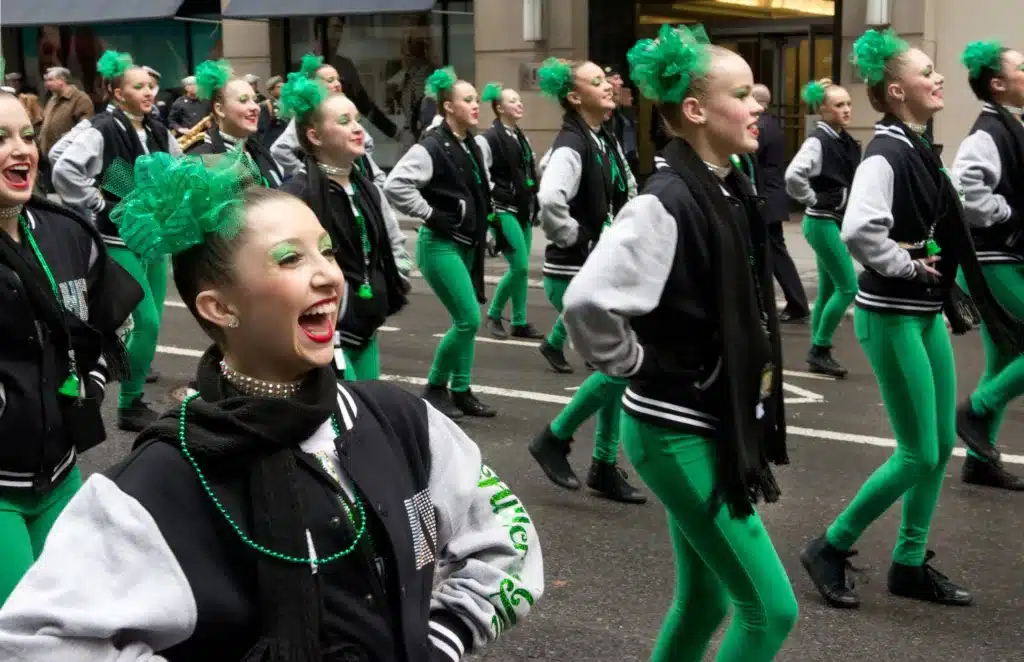
Customized Accessories:
Accessories like hats, scarves, and pins may be customized with Irish symbols, colors, or slogans. These small touches provide individuals with a way to participate in the celebration without necessarily wearing an entire outfit – dedicated to the occasion, and this idea could suit those who don’t want to stand out in – an obvious way.
In summary, attire on St. Patrick’s Day serves as a visually striking and culturally significant means for individuals to express their pride in Irish heritage. Whether through traditional symbols, Celtic designs, or a modern twist on fashion, people use clothing to connect with their roots and celebrate the rich cultural tapestry of Ireland.
Accessibility and generality in Celebrating with Celtic Attire
Celebrating with Celtic attire can be a wonderfully cultural experience when approached with mindfulness towards accessibility and generality. Costumes, memorabilia and even pets are catered for online at Etsy.
Variety of Sizes and Fits:
When shopping for Celtic costumes look for a wide range of sizes to accommodate different body types. Consider both traditional and modern styles can cater to individual preferences and comfort levels – when you make your selections. Catering to plus sizes and different body types – research this site out now.
Adaptations for Mobility Challenges:
Look at adaptations – as some individuals experience mobility challenges. For example, consider alternative closures (such as Velcro or elastic) on clothing items and be flexible with what is offered. There are those who may have difficulty with buttons or laces, but still want to be included in the Celtic culture. These types of closures are usually adapted within, when purchasing online costuming. Ensure that accessories like belts, hats, or shawls can be easily adjusted for comfort.
Material Sensitivity:
Choose fabrics that are comfortable and come in a variety of skin sensitivities. Avoid materials that may cause irritation or discomfort. For example some wool types (for Kelts) can often be itchy, so a lining is recommended for optimum comfort. Information labels about the materials used in the outfit should be visible, allowing individuals to make informed choices.
Cultural Sensitivity and Appropriation:
Be mindful of the cultural significance of Celtic apparel and ensure that its use is respectful and not appropriative. Participants need to be educated about the cultural background of the attire to foster understanding and appreciation.
Affordability and Accessibility:
Celtic attire should be accessible and affordable. Consider options for hiring or borrowing if you are not able to buy the whole outfit yourself. Ensure that you search for different options available to purchase either, online or offline, that makes it accessible to a diverse audience. I have found some bargains for you to peruse here at Amazon today.
Educational Resources:
Study educational materials or visit workshops that provide information on the cultural and historical content of Celtic attire. This can enhance your understanding and foster a sense of connection to the tradition.
DIY and Commercial outfits: Balancing Authenticity and Creativity
Balancing authenticity and creativity in both DIY (Do It Yourself) and commercial outfits is essential for creating meaningful and successful projects.
DIY Outfits: Define Your Purpose:
Stay True to Your Vision: Embrace your unique perspective and personal style. Let your personality shine through in your DIY creations. But keep it individual, as this is most important.
Experiment and Learn: Use the DIY process as an opportunity to experiment with new ideas and techniques. Allow yourself to make mistakes and learn from them. I recommend using Calico when you are crafting your costume for the 1st time, as it allows for mistakes, prior to starting with your chosen materials.

Resourcefulness: Embrace the DIY spirit by being resourceful. If possible, use what you have on hand, repurpose materials, and find creative solutions to challenges. However I would only recommend this, if you have prior sewing experience, unless you only choose to craft with glue and hand-sew it. There are some fun pieces you can work with to create your costume pieces – purchase them today.
Community Engagement: Share your DIY projects with others who have similar interests. Engage with a community to gain inspiration, feedback, and support. Online groups are usually helpful in this aspect.
Commercially bought Outfits:
If you’re looking to purchase St. Patrick’s Day outfits, you have several options. Many clothing retailers, both online and brick-and-mortar stores, offer themed apparel for St. Patrick’s Day. Here are some common items you might find, but keep in mind that most of these items are not traditional, but rather contemporary fashion pieces.
Green Clothing: T-shirts, sweaters, or hoodies in various shades of green, or green pants, leggings, or skirts. find these green clothing items right here.
Accessories: Shamrock-themed accessories like hats, scarves, or socks. Green bowties, ties, or headbands. Jewelry featuring shamrocks or green colors. Buy these great ideas today.
Costumes: Leprechaun costumes or accessories. Irish-themed costumes such as traditional dresses or kilts with authentic accessories. Look at these varieties available at Amazon now.
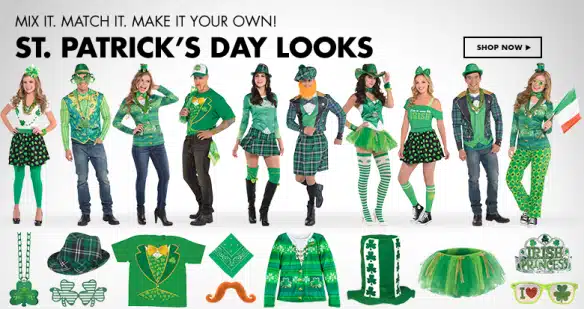
Graphic Tees: Shirts with St. Patrick’s Day-related graphics or funny Irish-themed phrases. A must have of these styles you can buy today.
Footwear: Green or shamrock-patterned shoes or sneakers. Black patent shoes would also suffice if you can’t find anything in green. Let’s walk a mile in these green shoes today – learn more here.
Novelty Items: St. Patrick’s Day-themed pajamas or onesies. Novelty glasses, hats, or other wearable items. You may be able to purchase these items here.
Children’s Clothing: St. Patrick’s Day outfits for kids, including onesies, dresses, or shirts. Boys black or green trousers, adding your own DIY tartan iron-on’s or embellishments on the cuffs or pockets, so they stand out. Cute styles and designs are available now for children here at Amazon.
Customized Merchandise: Many online platforms allow you to customize clothing items with St. Patrick’s Day designs or personalized messages, keep in mind that the items need to be fairly simple in design – so you can add your own personal touch to it. Some customized merchandise is available at Etsy. However, Amazon may have some more to choose from – take a look.
When searching for St. Patrick’s Day outfits, consider checking popular clothing retailers, department stores, online marketplaces like Amazon, and specialty shops that offer holiday-themed apparel. Keep in mind that availability may vary depending on the time of year and location. Additionally, you can always explore local stores or small boutiques that may carry unique and handmade St. Patrick’s Day items.
I have enjoyed bringing you this post on the history of St. Pat’s day, and how you can adapt your own personal touch or idea whether crafting or searching for that perfect individual outfit.
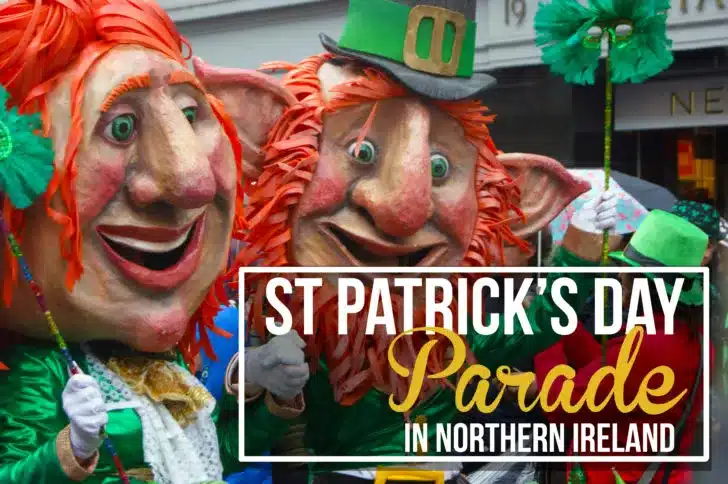
If you have any comments or questions on the subject – please leave them below.
“go raibh maith agat” – May you have goodness.
Helen
Connect with us via our socials or get in touch below:
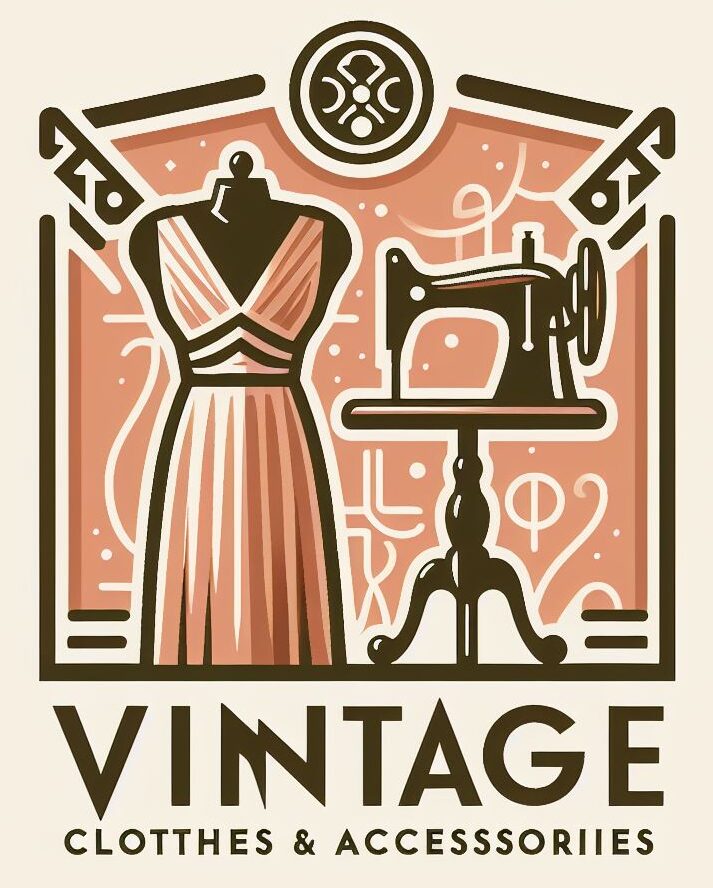
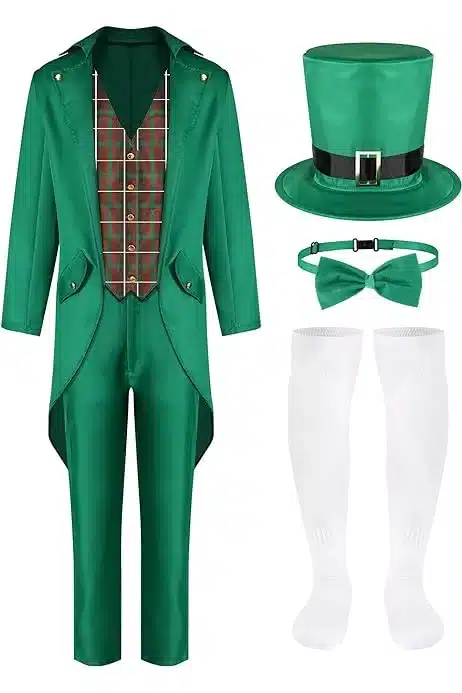

Wow, this is so comprehensive! I learned a lot about St. Patrick’s Day that I didn’t know before.
I love how you included information about both the traditional and modern ways people celebrate.
Thanks Jihan, yes it’s really a tradition that goes way back in time and I appreciate how the celebrations are held by so many.
Love St. Patricks Day! Nice article. Learned something’s I did not know.
Yes indeed, a great way to celebrate.